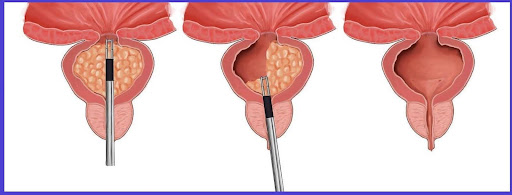An enlarged prostate affects millions of men as they age, with symptoms often developing gradually over time. This condition, also known as benign prostatic hyperplasia, occurs when the prostate gland grows larger and may interfere with normal urinary function. Understanding the symptoms, diagnosis process, and management strategies can help you make informed decisions about your health. Early recognition of signs enables better outcomes and an improved quality of life.
What Are Common Symptoms?
Men with an enlarged prostate often experience urinary symptoms that worsen over time. These symptoms develop because the growing prostate gland puts pressure on the urethra, making it harder for urine to flow freely. You might notice changes in your bathroom habits or feel like your bladder isn’t emptying completely.
The most frequent symptoms include:
- Frequent urination – You may need to urinate more often than usual, especially at night, which can disrupt sleep patterns and daily activities.
- Weak urine stream – The flow of urine becomes slower and weaker, making it take longer to completely empty your bladder.
- Difficulty starting urination – You might need to strain or wait for the urine stream to begin, even when you feel the urge to go.
- Incomplete bladder emptying – After urinating, you may feel like your bladder still contains urine, leading to frequent trips to the bathroom.
- Urgency – You might experience sudden, strong urges to urinate that are difficult to control or delay.
These symptoms can range from mild to severe and may fluctuate over time. Some men experience gradual worsening, while others notice periods of improvement followed by symptom flare-ups.
How Is An Enlarged Prostate Diagnosed?
Healthcare providers use several methods to diagnose an enlarged prostate and rule out other conditions. Your doctor will begin with a thorough medical history and a comprehensive physical examination. They’ll ask about your symptoms, how long you’ve experienced them, and how they affect your daily life.
The diagnostic process typically includes a digital rectal exam, where your doctor feels the prostate through the rectal wall to check its size and texture. Blood tests may measure prostate-specific antigen levels and check kidney function. A urine test may help identify infections or other urinary tract problems. Additional tests may include a urine flow study to measure the rate of urination or an ultrasound to assess the amount of urine remaining in the bladder after urination. Some men may require more specialized tests, such as a cystoscopy, where a thin tube with a camera is inserted to examine the inside of the urethra and bladder.
Do Lifestyle Changes Help?
Simple lifestyle modifications can significantly reduce enlarged prostate symptoms for many men. These changes work by reducing pressure on the bladder and improving urinary flow. Making adjustments to daily habits often provides relief without medication or medical procedures.
Effective lifestyle strategies include:
- Limiting fluids before bedtime – Reducing liquid intake 2-3 hours before sleep can decrease nighttime urination and improve rest quality.
- Avoiding bladder irritants – Cutting back on caffeine, alcohol, and spicy foods may reduce urinary urgency and frequency.
- Scheduled bathroom breaks – Going to the bathroom on a regular schedule, even when you don’t feel the urge, may help manage symptoms.
- Pelvic floor exercises – Strengthening these muscles through Kegel exercises may improve bladder control and reduce symptoms.
- Managing stress – Reducing stress through relaxation techniques or regular exercise can help minimize symptom flare-ups.
These modifications work best when combined and practiced consistently. Many men notice improvement within a few weeks of implementing these changes. Lifestyle adjustments may not be sufficient for everyone, especially those with more severe symptoms.
Consult a Specialist
Managing enlarged prostate symptoms requires professional medical guidance and regular monitoring. A urologist can recommend the best treatment options tailored to your needs and help track symptom changes over time, adjusting your plan as necessary. Don’t let these symptoms disrupt your quality of life. Scheduling an appointment with a healthcare provider can help you explore treatments that improve your comfort and allow you to sleep through the night. Take the step to feel better and regain control.

